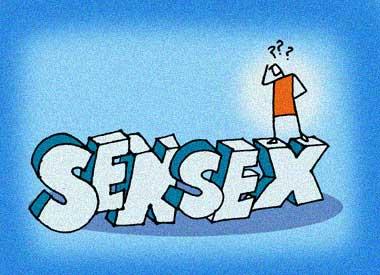
 emember Freddie Mercury of Queen belting out these lyrics, "Don't stop me now, I'm having a good time, I'm having a ball"? Well, that seems the Sensex's song at the moment.
emember Freddie Mercury of Queen belting out these lyrics, "Don't stop me now, I'm having a good time, I'm having a ball"? Well, that seems the Sensex's song at the moment.
The Sensex, which has crossed the 6,000 mark, seems unstoppable.
Which makes it the right time to give you some dope on the hot new craze in town.
What's so hot about the Sensex?
It is the benchmark index for the Indian stock market. It is the most frequently used indictor while reporting on the state of the market.
The index has just one job: To capture the price movement. So a stock index will reflect the price movements of shares while a bond index captures the manner in which bond prices go up or down.
If the Sensex rises, it indicates the market is doing well. Since stocks are supposed to reflect what companies expect to earn in the future, a rising index indicates investors expect better earnings from companies.
It is, therefore, also a measure of the state of the Indian economy. If Indian companies are expected to do well, obviously the economy should do well too.
In case you are wondering why a stock market index has a provocative term like Sensex, let me tell you it stands for something quite mundane -- The Bombay Stock Exchange Sensitive Index.
What is the Sensex made of?
Thirty stocks. That's right. Just 30 stocks tell you how the market is faring.
Before you throw up your hands in protest, there is something you should know about these 30 stocks.
For one, they are the most actively traded stocks in the market. In fact, they account for half the BSE's market capitalisation (To understand the term market capitalisation, read What's in a share? Money!).
Besides, they represent 13 sectors of the economy and are leaders in their respective industries. Now that sounds fair, doesn't it?
Who selects these 30 stocks?
They are selected by the Index Committee.
This committee consists of all sorts of individuals including academicians, mutual fund managers, finance journalists, independent governing board members and other participants in the financial markets.
How do they select these 30 stocks?
Well, they definitely don't do it on the basis of their individual whims and fancies. Some of the criteria they follow include:
~ The stock should have been traded on each and every trading day (the days on which the stock market works) for the past one year.
~ It should be among the top 150 companies listed by average number of trades (buying or selling of shares) and the average value of the trades (in actual rupee terms) per day over the past one year.
~ The stock must have been listed on the BSE for at least one year.
Does the Sensex have any contemporaries?
In terms of age? No.
The Sensex is the oldest index in the country. It was born in 1986.
In terms of popularity, the Nifty follows close.
The Nifty? What's that?
Well, the National Stock Exchange has an index called the Nifty (officially called S&P CNX Nifty). This name can be credited to the 50 stocks that comprise its index.
Isn't that a broader representation than the Sensex?
You're right. The Nifty has 50 stocks covering 24 sectors, as against 30 stocks and 13 sectors for the Sensex.
In case you are shaking your head about 50 also being too small a number, let me remind you these 50 stocks account for around 60 percent of the market capitalisation.
If these indices tell us about the market, why do people talk about sectoral indices?
The price of every stock price increases or decreases for two possible reasons:
~ News about the company, like a product launch, closure of a factory, the government providing tax or duty exemptions to the sector so more profits expected, a feud among the company's top bosses, etc. This will be stock specific news.
~ News about the country, like testing a nuclear bomb, a terrorist attack, a budget announcement, etc. This will be called index news.
The job of an index is mainly to capture the news about the country. This will reflect the movement of the stock market as a whole.
A good index will only capture news that is common to all stocks in India. This is what the Sensex and the Nifty do.
What about stock specific news then?
This is where the sector-specific indices come into the picture. They reflect the performance of the stocks in a particular sector only
For example, the BSE's IT Index captures the price movements of information technology stocks while its Bankex represents the change in the prices of bank stocks.
So a look at the specific sector index will tell you about that particular sector. For instance, bank stocks may not be performing and that will be reflected in the Bankex falling or remaining stagnant even though the Sensex might have gone up.
Did you know the NSE has a mid-cap index that is made up of mid-sized companies?
This index has run up smartly in recent months, rising even more than the Nifty, which shows that people have been investing more in smaller companies. This could be because the price for the stocks of bigger companies has increased recently.
Now, let's see how globally savvy you are.
Guess the countries these indices represent -- Dow Jones Industrial Average, the FTSE (Footsie) and the Nikkei?
The US, the UK and Japan.
Next: How Sensex movements are calculated
DON'T MISS




